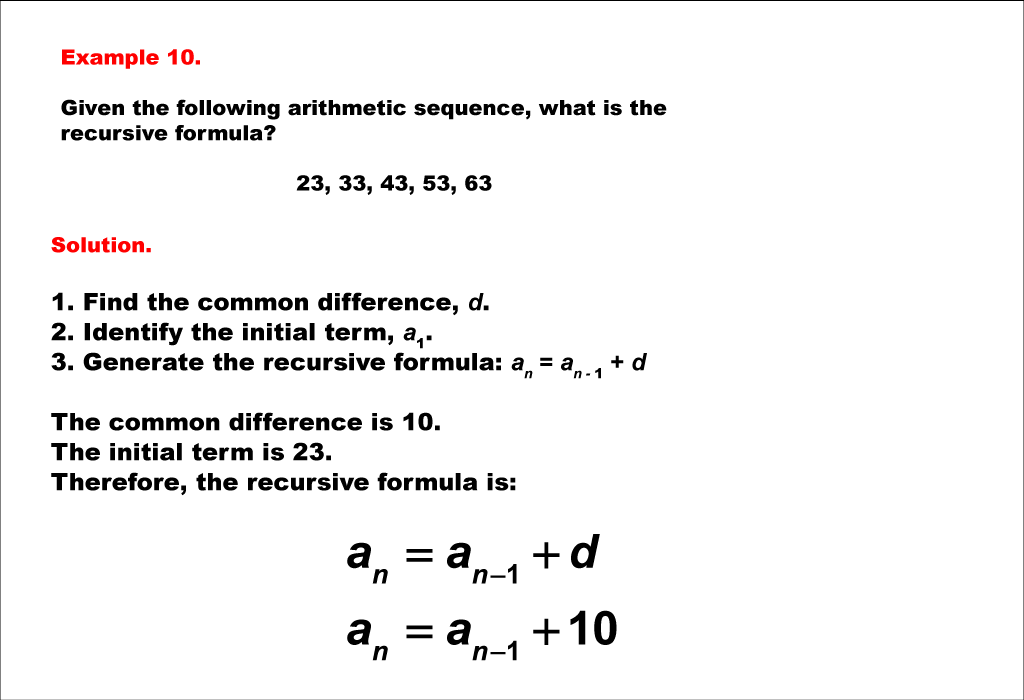
Display Title
Math Example--Sequences and Series--Finding the Recursive Formula of an Arithmetic Sequence: Example 10
Display Title
Math Example--Sequences and Series--Finding the Recursive Formula of an Arithmetic Sequence: Example 10
Finding the Recursive Formula of an Arithmetic Sequence: Example 10

Topic
Sequences and Series
Description
Process for Finding the Recursive Formula
- Identify the First Term: The first term of the sequence is denoted as a1.
- Determine the Common Difference: The common difference is found by subtracting the first term from the second term.
- Write the Recursive Formula: The recursive formula for an arithmetic sequence is:
an = an - 1 + d
where an is the nth term, an - 1 is the previous term, and d is the common difference.
Distinguishing Recursive from Explicit Formulas
- Recursive Formula: Defines each term based on the previous term(s). It requires knowing the initial term and is useful for generating terms sequentially.
- Explicit Formula: Allows direct computation of any term in the sequence without reference to previous terms. It is more efficient for finding terms far into the sequence.
Given Sequence
Sequence: [23, 33, 43, 53, 63]
First term (a₁) = 23
Common difference (d) = 33 - 23 = 10
Recursive formula: an = an - 1 + 10
For a complete collection of math examples related to Sequences and Series click on this link: Math Examples: Sequences and Series Collection.
| Common Core Standards | CCSS.MATH.CONTENT.HSF.BF.A.2 |
|---|---|
| Grade Range | 9 - 11 |
| Curriculum Nodes |
Algebra • Sequences and Series • Sequences |
| Copyright Year | 2022 |
| Keywords | arithmetic sequences, recursive formula |